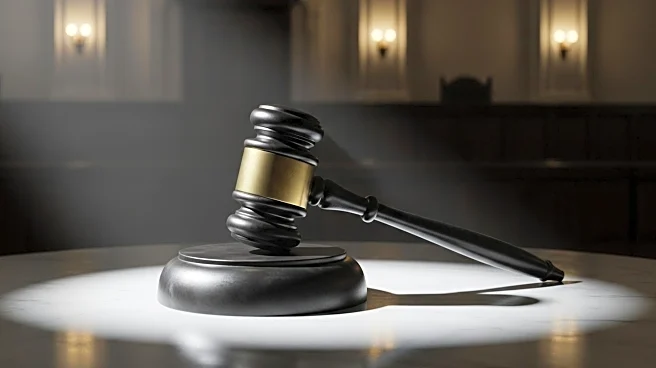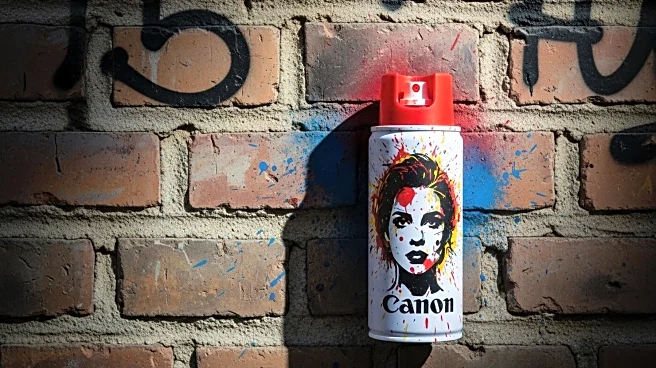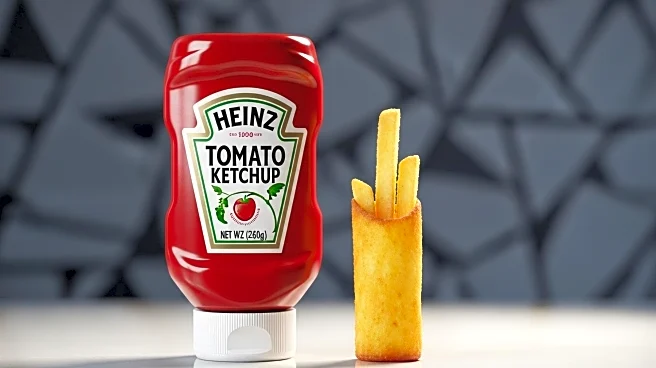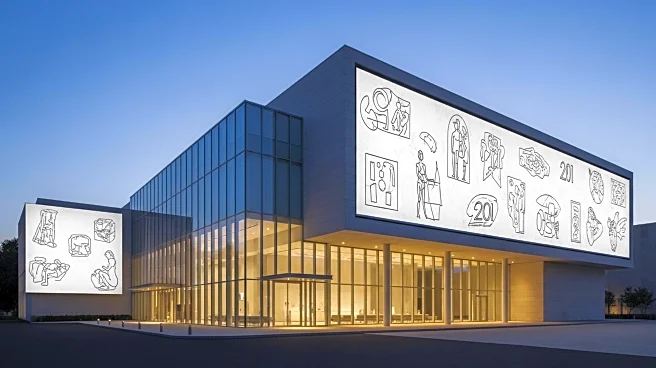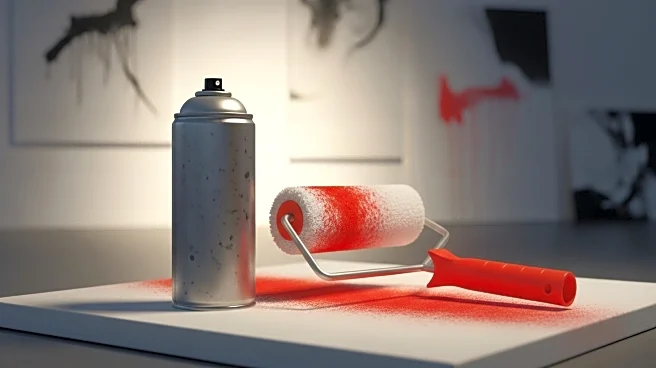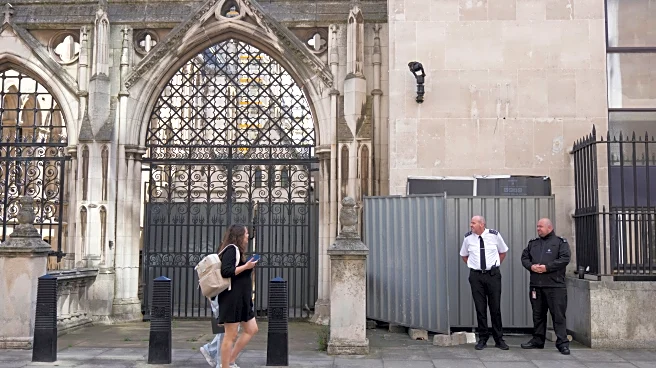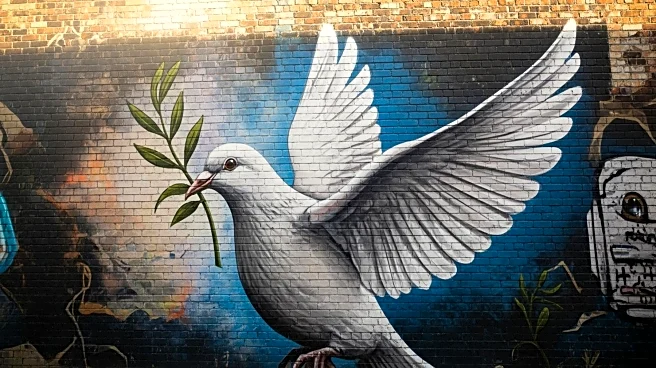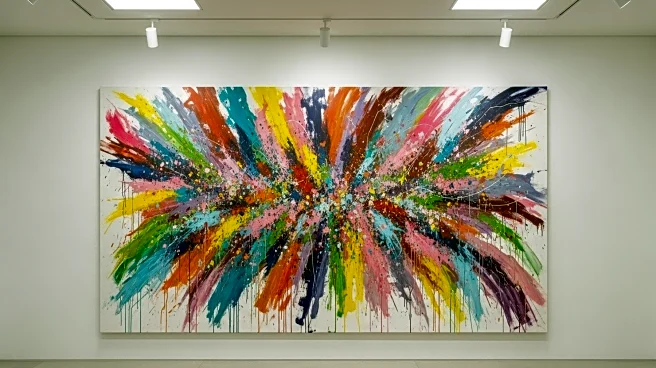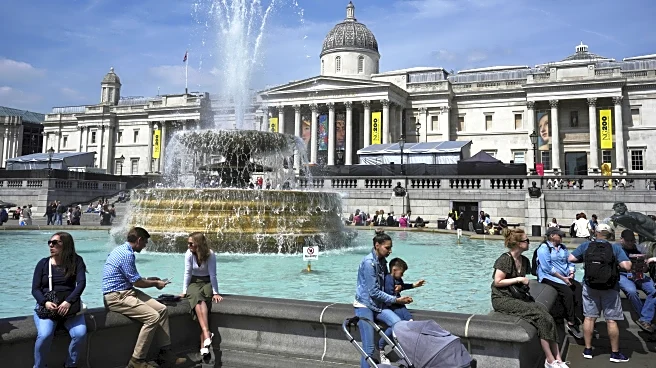What's Happening?
A mural by Banksy, depicting a judge wielding a gavel over a protester, was removed from the Royal Courts of Justice in London. The artwork appeared on the building's wall on Monday and was quickly covered and guarded by security staff. The removal was due to the building's listed status, which legally obliges the courts service to maintain its original character. The mural has been interpreted as a commentary on recent arrests related to Palestine Action protests. Banksy confirmed his involvement with the mural through a post on Instagram, sparking discussions about the role of street art in political discourse.
Why It's Important?
The removal of Banksy's mural underscores the ongoing debate about the preservation of street art and its impact on public spaces. Banksy's work often challenges societal norms and provokes thought on political issues, making it a valuable form of expression. The incident raises questions about the balance between maintaining heritage sites and allowing contemporary art to convey messages. As street art gains recognition, the destruction of such works highlights the need for dialogue between artists, authorities, and the public.
What's Next?
The removal of Banksy's mural may lead to further discussions about the protection of street art and its place in public spaces. Advocacy groups and art enthusiasts might push for policies that recognize the cultural value of such works, even when they are controversial. The incident could also inspire other artists to create works that address similar themes, using alternative platforms to reach audiences.
Beyond the Headlines
Banksy's art often provokes thought and debate, serving as a catalyst for discussions on issues like censorship, freedom of expression, and the role of art in society. The removal of his mural reflects broader societal challenges in reconciling artistic freedom with legal constraints. As street art continues to gain recognition as a legitimate form of cultural expression, incidents like this highlight the need for dialogue between artists, authorities, and the public.
